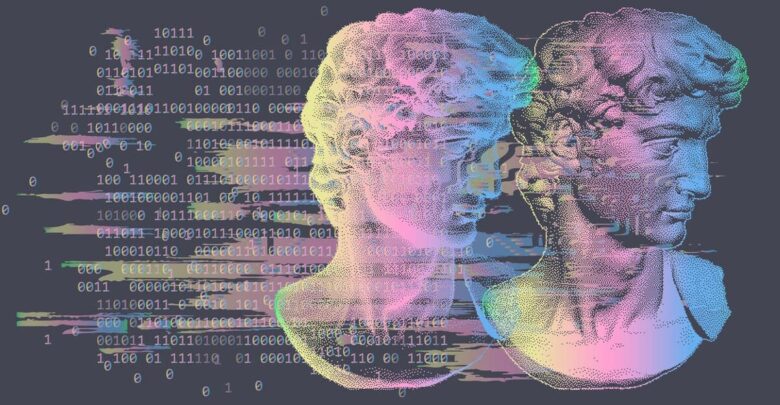Concept to CommercialisationEmerging TechnologiesInnovation
Quantum State: An Examination of the Nature of NFTs

Non Fungible Tokens, or NFTs, as a recent phenomenon, have taken the world by storm. From a technical standpoint, NFTs can be seen as digital representations of computer code with a scarce and unique value, but from a consumer’s standpoint, NFTs can range from an image to a video to a GIF of anything in this world, such as an image of a tweet, to a video of a Goal scored by Ronaldo.
The main selling point of NFTs is in their design as a publicly owned unique asset. Non-fungible tokens are intended to constitute non-divisible tokens, unique and distinguishable representations of a digital or physical asset (e.g., an artwork or a house).[1] Essentially, one would own the image of the tweet, with the transaction being recorded on the blockchain ledger for transmission purposes.
This interesting nature of NFTs is what leads to our current conundrum with regards to how they would operate within the current Intellectual Property (hereinafter IP) Law framework as it exists today, especially with regards to Copyrights. For example, while an NFT of the goal scored by Ronaldo could be sold to an individual, the footage of the same goal may exist elsewhere on the Internet. Does this mean that the individual who bought the NFT has exclusive rights to that footage and its use, or does it mean that the NFT itself cannot exist, because it is for publicly available footage?[2] The existing framework of copyright and other IP Laws must also be examined to see whether the operation of NFTs is viable with them. Additionally, we need to also understand the legal status of NFTs, which are a new development in the field of cryptocurrency, which itself does not have the most absolute legal standing as of yet. The following article shall aim to do this, and try to arrive at a conclusion on this subject.
What are NFTs?
While we do have a basic understanding as to what an NFT really is, we need to understand the elements of the blockchain at play here, along with what actually constitutes an NFT. First, the “non-fungible” in “non-fungible token” refers to the token itself—i.e., the block of code that makes up the NFT, and not to the artwork that an NFT is associated with. NFTs are often shorthanded as “linking” to artwork, or “pointing to” or “representing” it. But those characterizations are misleading. NFTs identify a particular digital artwork only in the most general way: They contain a “hash” (A hash is a code that’s generated by passing all the data in a digital file through an algorithm that outputs a short alphanumeric “signature”) of the artwork as part of the code that makes up the NFT, and some contain a link to an internet address that displays a copy of the artwork.
A simpler way of understanding how NFTs really work may be illustrated by the following example- Let us take the example of a Painting, X. Owning an NFT is like owning a piece of paper which says that “The person who has this paper owns the Painting X,” rather than the Painting X itself. This can mean that in the case of an NFT, while the blockchain records every aspect of the transaction, it is more a transfer of ownership rights to a property, rather than the property itself. This part is essential to understand why copyright laws especially become quite entangled in all aspects of NFTs.
Another important aspect of NFTs that also needs a mention is “Gas.” Gas refers to the unit that measures the amount of computational effort required to execute specific operations on the Ethereum network.[3] Ethereum’s gas is an essential regulator that prevents anyone from spamming the network. This is a major benefit of utilising Ethereum rather than an open-source platform such as Bitcoin for NFTs because the presence of Gas reduces the presence of bad actors on the platform. However, Gas can become an essential factor in NFT transactions, as it is a double-edged sword. When gas prices are high, it becomes prohibitive for up-and-coming artists to create, mint, and even buy other pieces of work.[4] Additionally, Gas prices can range from 25-57% of the cost of the NFT, and in some extreme cases, even exceed the base price. Thus, Gas’s presence as a regulatory fee is another factor that needs to be accounted for, since it is essential for third-party regulation of a crypto asset.
Let us now examine various aspects of NFTs as they entangle with the current legal framework.
India, and the Regulation of Cryptocurrencies
NFTs are created on blockchain technology, akin to other virtual currencies and crypto-assets (NFTs, specifically, exist on the Ethereum platform).[5] In India, specifically, the legality of Bitcoin and other such virtual currencies has been a question specifically dealt with in the last few years. A ban on such virtual currencies would deem NFTs illegal as well since the underlying technology operates on the same principle; essentially implying a de facto ban. In April 2018, the Reserve Bank of India (RBI) issued a circular that specifically prohibited entities regulated by the RBI from dealing with such currencies,[6] which led to many issues with crypto assets in India.
However, the Supreme Court of India, in Internet and Mobile Association of India v. Reserve Bank of India, [7] struck down the RBI circular calling it preemptive and disproportionate to the grounds outlined by the RBI in issuing said circular. The RBI subsequently did issue a notification to Banks to disregard the earlier circular,[8] which means that currently, cryptocurrencies, and the underlying blockchain technology which concerns NFTs, exist in a legal gray area.
Thus, the status of crypto assets such as NFTs in India, especially considering the Draft Banning of Cryptocurrency & Regulation of Official Digital Currency Bill, 2019,[9] is one that seems to be in a state of flux. While the Draft Bill was introduced before the Parliament in 2019, after the judgment of the Supreme Court in IMAI v. RBI, and in the due course of time, there’s been a change in the Government’s stance on the issue of virtual currencies. The Government plans to introduce the Cryptocurrency and Regulation of Official Digital Currency Bill, 2021, in the fifth session of the seventeenth Lok Sabha, a bill that aims to create a facilitative framework for the creation of the official digital currency to be issued by the Reserve Bank of India. The Bill also seeks to prohibit all private cryptocurrencies in India, however, it allows for certain exceptions to promote the underlying technology of cry[t]pto currency and its uses.”[10] The new Cryptocurrency and Regulation of Official Digital Currency Bill’s stance on allowing certain exceptions for the use of the underlying technology of cryptocurrency could allow for the use of blockchain technology specifically for NFTs. Thus, the Parliament’s actions in the coming months and years on this matter shall be essential to understand the actions at play.
Status under Securities Contracts (Regulation) Act, 1956
Another important aspect of NFTs to be considered is the school of thought that argues that NFTs are “contracts in derivative,” and thus liable to be regulated under the Securities Contracts (Regulation) Act (SCRA), which would mean their sale and purchases would have to be conducted on regulated exchanges. Derivatives are a contract between two or more parties that obtains their value from fluctuations in the underlying asset. As per the SCRA, ‘derivative’ includes: (A) security from a debt instrument, share, loan, whether secured or unsecured, risk instrument or contract for differences or any other form of security; (B) a contract which derives its value from the prices, or index of prices, of underlying securities.[11]
Since the very nature of NFTs is such that they derive value from their uniqueness or their non-fungibility, there is a school of thought which sees them as contracts in derivatives. However, in India, a derivative derives its value from particular security, which is a financial instrument such as stocks or commodities. As of now, however, there is no legal framework for a derivative value for a non-financial asset, such as NFTs, which is a digital artwork or asset, rather than a financial instrument.
Regardless of this, if NFTs are contracts in derivative as outlined in the SCRA, then as stipulated in Section 18A, contracts in derivatives will be valid and legal only if such contracts are: (i) traded on a recognised stock exchange; and (ii) settled on the clearinghouse of the recognised stock exchange, in accordance with the bye-laws of such stock exchange.[12] Thus, the very sale of NFTs could be prima facie illegal if their status as contracts in derivatives is solidified.
However, one way to legitimise these sales may be through the institution of specialised peer-to-peer decentralized matching exchanges (DEX’s).[13] DEX’s are a software-based platform that allows crypto-market participants to trade directly with one another by eliminating any third-party involvement. Online trading platforms have already been given recognition by the Central Government, and a recognised stock exchange under the SCRA means “a stock exchange which is for the time being recognised by the Central Government,”[14] meaning that plausibly, DEXs could be set up under the Government’s watchful eye, and allow for the legal trading of NFTs.
NFTs and Copyrights
Copyright Registration
There are a few different contexts in which NFTs need to be examined. The blockchain-based system of NFTs creates an interesting paradigm of Intellectual Property (IP) Rights with regards to copyright registration.
Theoretically, with blockchain-based copyright registration systems, authors can publish works on a blockchain-based system creating a quasi-immutable record of initial ownership and encode smart contracts to license the use of works.[15] Remuneration may happen on online distribution platforms where the smart contracts reside. In theory, such an automated setup allows for the private ordering of copyright.[16] It is pertinent to note that this still does not resolve the major problem of jurisdictional hyper fragmentation of copyright law, such as territoriality, subject matter, exclusive rights, and context-based exceptions, especially considering the impersonal nature of blockchain-based systems. The main reason for many initially hyped blockchain copyright registration systems is that the system is useless if it cannot rely on or ensure high-quality metadata. But the problem of metadata quality is more institutional than technological. But, it is from the ashes of this once hyped system for copyright registration that NFTs have arisen, even though many of the problems with regards to at least metadata continue to exist.
Originality
As addressed earlier, owning an NFT is akin to owning a piece of paper which says that “The person who has this paper owns the Painting X,” rather than owning the piece of paper. But more specifically, the idea behind NFT is one of scarcity, in that the piece of paper in our example, is also signed by the artist of Painting X, which is what makes it unique, or non-fungible. The question of the exclusivity of the NFT, is thus redundant, because what makes our NFT unique is the combination of the text and the artist’s signature, and nothing specifically in smart contracts prohibits the artist from recreating the work.
Thus, an NFT is unique only when it is created, and a creator is always free to create more such “artworks.” This was already litigated in the US, where a photographer re-issued a limited print edition in different size and got sued because it was decreasing the value of the sold copies. The photographer won, and the judge decided that “although both the Limited Edition works and the Subsequent Edition works were produced from the same images, they are markedly different.”[17] Thus, unlike the public conception, NFTs derive their value not from their originality, but from their unique value as a scarce asset.
It is a point to note that this quality of NFTs is why many artists across the world in recent months have reported that their work has been stolen and sold as NFTs by bad actors.[18] Tools such as automated NFT bots are being utilized for this purpose, with a particular Twitter bot (@tokenisedtweets) gaining particular recognition for this. The nature of NFTs as specific representations of an artwork, rather than the artwork itself has meant that many artists have seen their copyright claims gone unheard, despite their artwork being the one up for sale.
Infringement
The use of publicly available imagery and content makes Infringement a particularly interesting aspect of NFTs. Let us take the example of the Mona Lisa or at least a digital image of the Mona Lisa. If I, as an individual, download this image and then use a third-party service to create an NFT of the same, would that be an infringement of the rights of the Musee Du Louvre over the iconic Da Vinci masterpiece? I downloaded the file from the Internet, and then went and produced some metadata that is intrinsically linked to it. While the file is online, it need not be, because an NFT is not the image itself, but the tokenized version of the image. Is this unauthorised copying? Is it communication to the public?[19] In the case of NFTs, because what makes it unique is the metadata containing the ownership information of the NFT itself, and not the content, there is water to the argument that since the purpose of the NFT is not to transfer the content, but rather this metadata, that a copyright violation cannot exist.
Conclusion
A unique reality of NFTs is that they represent the next step in public domain use and ownership, combining these ideas in ways that the current legal framework is not able to keep up with. Ideas such as Copyrights and their use will continue to be redundant as long as NFTs and other derivative blockchain technologies continue to exist in the Wild West that they currently exist in. The reality is that in order for the law to be reconciled with NFTs, we need comprehensive legislation on the base technology of blockchain, along with modern digital assets such as NFTs, so as to prevent the misuse of such technologies, for purposes such as theft of digital art or funding of criminal enterprises.
The article can be cited as:
Jotsaroop Singh, Quantum State- An Examination of the Nature of NFTs, Metacept-Communicating the Law, accessible at https://metacept.com/quantum-state:-an-examination-of-the-nature-of-nfts
References:
[1] Alexandra Giannopoulou, João Pedro Quintais, Peter Mezei and Balázs Bodó, The Rise of Non-Fungible Tokens (NFTs) and the Role of Copyright Law – Part I, Kluwer Copyright Blog, (30th July 2021, 04:38 A.M.) http://copyrightblog.kluweriplaw.com/2021/04/14/the-rise-of-non-fungible-tokens-nfts-and-the-role-of-copyright-law-part-i/ .
[2] Kal Raustiala and Christopher Jon Sprigman,The One Redeeming Quality of NFTs Might Not Even Exist, The Slate, (30th July 2021, 04:40 A.M.) https://slate.com/technology/2021/04/nfts-digital-art-authenticity-problem.html?via=rss_socialflow_twitter.
[3] –, Gas and Fees, Ethereum, (July 30th 2021, 04:45 A.M.) https://ethereum.org/en/developers/docs/gas/
[4] –, What are NFT Gas Prices? Understanding Ethereum, Gas and Gwei, NFT Culture, (July 30th 2021, 04:43 A.M.) https://www.nftculture.com/guides/what-are-nft-gas-prices-understanding-ethereum-gas-and-gwei/.
[5] DSK Legal, COMMERCIALISING COPYRIGHT: NFTS – DOES POPULARITY MITIGATE LEGAL RISKS, Legal 500, (July 30th 2021, 04:47 A.M.), https://www.legal500.com/developments/thought-leadership/commercialising-copyright-nfts-does-popularity-mitigate-legal-risks/
[6] Prohibition on dealing in Virtual Currencies (VC), Reserve Bank of India, April 6, 2018. (RBI circular DBR.No.BP.BC.104/08.13.102/2017-18 dated April 06,2018) https://rbidocs.rbi.org.in/rdocs/notification/PDFs/NOTI15465B741A10B0E45E896C62A9C83AB938F.PDF
[7] Internet and Mobile Association of India v. Reserve Bank of India, (2020) 10 SCC 274.
[8] Customer Due Diligence for transactions in Virtual Currencies (VC), Reserve Bank of India, May 31, 2021. (RBI/2021-22/45 DOR. AML.REC 18 /14.01.001/2021-22) https://rbidocs.rbi.org.in/rdocs/notification/PDFs/45VIRTUALCURRENCIES37FE644EF97F4A36AAB951C73A411E96.PDF
[9] Draft Banning of Cryptocurrency & Regulation of Official Digital Currency Bill, 2019 https://dea.gov.in/sites/default/files/Approved%20and%20Signed%20Report%20and%20Bill%20of%20IMC%20on%20VCs%2028%20Feb%202019.pdf (Page 59 of the Report)
[10] Lok Sabha Bulletin Part – II, No. 2022, January 29, 2021. http://loksabhadocs.nic.in/bull2mk/2021/29012021.pdf
[11] Section 2(ac), Securities Contract (Regulation) Act, 1956, No. 42, Acts of Parliament, 1956 (Hereinafter SCRA).
[12] SCRA, Supra note 11,Section 18 (a).
[13] Rahul AR, What is a Peer-to-Peer (P2P) crypto exchange? How does it work, Accubits, (July 30th 2021, 05:07 A.M.) .https://blog.accubits.com/what-is-a-peer-to-peer-p2p-exchange-and-how-does-it-work/
[14] SCRA, Supra note 9, Section 2 (f).
[15] Balázs Bodó, Daniel Gervais, João Pedro Quintais, Blockchain and smart contracts: the missing link in copyright licensing?, 26 (4) International Journal Of Law And Information Technology, 311–336.
[16] Peter Mezei, Alexandra Giannopoulou, João Pedro Quintais, Peter Mezei and Balázs Bodó, The Rise of Non-Fungible Tokens (NFTs) and the Role of Copyright Law – Part II, Kluwer Copyright Blog, (July 30th 2021, 05:17 A.M.) http://copyrightblog.kluweriplaw.com/2021/04/22/the-rise-of-non-fungible-tokens-nfts-and-the-role-of-copyright-law-part-ii/
[17] Sobel v. Eggleston, 12 Civ. 2551 (DAB)(S.D.N.Y.).
[18] James Purtill, Artists report discovering their work is being stolen and sold as NFTs, ABC News, (March 16, 2021) https://www.abc.net.au/news/science/2021-03-16/nfts-artists-report-their-work-is-being-stolen-and-sold/13249408.
[19] Andrez Guadamuz, Copyfraud and copyright infringement in NFTs, Technollama, (July 30th 2021, 05:20 A.M.). https://www.technollama.co.uk/copyrfraud-and-copyright-infringement-in-nfts





